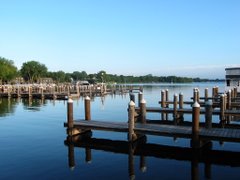How do you describe a condition where harmful polluting agents spread rapidly to new lakes, are self-replicating, and cannot be treated effectively or eradicated once they have been introduced? Minnesota Waters calls this condition an Aquatic Epidemic – or an Aquademic.
This introductory statement is from Minnesota Waters’ newly released position statement on aquatic invasive species (AIS) in Minnesota. Minnesota Waters is a state-wide advocacy organization and the Lake Minnetonka Association played a key role in developing the position statement and recommendations.
Minnesota Waters has found AIS to be a defining environmental issue in Minnesota. AIS are a serious and pervasive threat to our lakes – we must make equally serious investments and cultural changes to beat them. Minnesota Waters found the state’s system for protecting and managing AIS is broken and has made policy and funding recommendations to fix the dysfunctional system.
While education, awareness and voluntary actions have increased Minnesotans’ knowledge of AIS, more must be done.
The position statement found, “Unless we transform our approach, AIS will steadily overrun Minnesota’s lakes and rivers – with devastating results for our state’s businesses, communities, and recreation. The AIS management system in Minnesota is constrained by outdated laws and cultural norms and is seriously broken.” The good news is – it is not too late. The report’s recommendations include:
• An AIS management system that prioritizes its activities, especially by devoting more focus and resources to prevention should be adopted.
• 80% of all state resources for AIS should be devoted to prevention – and focused on much more than education and awareness.
• Funding for the AIS prevention program (excluding grant funding) should be doubled.
• Funding for AIS prevention and control grants to local interests should be increased from about $700,000 to $3.2 million per year.
• AIS plant control (like milfoil) should protect native plants and encourage restoration by requiring Lake Vegetation Management Plans (LVMPs), providing grant funding for LVMPs, eliminating permit fees and eliminating riparian consents.
• Finally, a dialog should be initiated among Minnesota’s resource managers and policy makers to re-examine the legal, cultural and social framework that now prevents consideration of Level 3 (a more stringent level described in the full report) AIS management system that includes these elements: quarantine of waters, significant increases in fines and penalties for AIS laws, new funding, inspection fees, providing local authorities to control accesses (while protecting public access rights).
The Lake Minnetonka Association supports these recommendations and will continue to work for their implementation.
A copy of the position statement and an executive summary is available on Minnesota Waters Website at: www.MinnesotaWaters.org (see News Stories and AIS Summary on the Home Page). A lengthy technical supporting report is also available at the same site.
The Lake Minnetonka Association finds these recommendations timely as we are working on two immediate AIS concerns - to control milfoil in Lake Minnetonka and to prevent zebra mussels from getting into the lake. Both these efforts could be greatly facilitated by a more comprehensive state policy and increased state funding.
Monday, July 13, 2009
Subscribe to:
Post Comments (Atom)


No comments:
Post a Comment